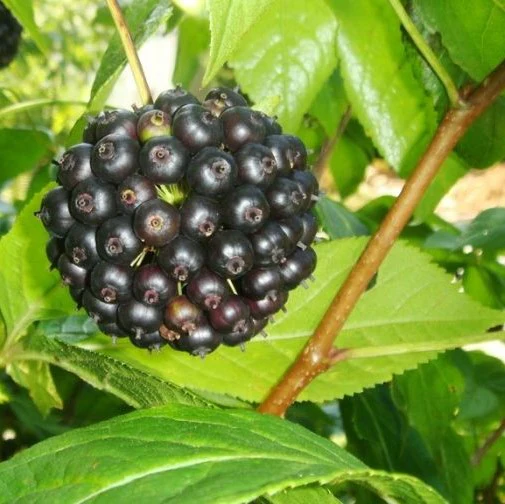Subscribe and save 10%!

Siberian Ginseng Plant 15-20 cm (Eleutherococcus senticosus)
385,00 NOK
Unit price perExpected delivery date: 17 January to 24 January.
Applies to orders within Sweden. For other countries - see our delivery terms .
Share
385,00 NOK
Unit price perSiberian Ginseng plant - current height: 15-20 cm
[Picture of plant coming soon]
Now this long-awaited plant has finally arrived in stock! After many requests, we have finally managed to get hold of a couple of plants, they are neither cheap nor easy to get hold of - hence the price.
I aim to bring in larger plants during the season, they will be around 2-3m and cost around 2000kr in store - so more value for money. Those of you who are interested in these plants are welcome to contact me so we know how many to order.
Common Names: Russian Root, Siberian Ginseng, Eleuthero, Kan Jang, Tiger Root
Scientific name: Eleutherococcus senticosus
Family: Araliaceae
Plant history & use:
Siberian Ginseng, or Russian root as it is also called, is a frost-resistant "Ginseng species" that is part of the same family as Korean Ginseng. ( Panax ginseng) and American Ginseng ( Panax quinquefolius ). It is not related to Indian Ginseng .
From this Ginseng, it is the root bark that is used for its adaptogenic properties. Adaptogens are called substances that help the body deal with different types of stress. Siberian Ginseng is well known among athletes and is also used to treat insomnia. Traditionally used in Russian/Chinese folk medicine.
Much of the Siberian Ginseng on the market is whole, ground roots, when in fact it is only the bark from the roots that contains the active ingredients. Here, of course, it is advantageous to grow it yourself as you control the entire process on your own.
Cultivation :
Siberian Ginseng is a shrub native to Northeast Asia that often grows in forests as undergrowth or forms dense thickets. The shrub is thorny and can grow up to 4 meters depending on the location.
It thrives well outdoors in Sweden and does not have particularly high requirements. In terms of soil, it can handle everything from sandy to heavy clay soils. However, it thrives best in soil mixed with leaf and compost. It prefers light to partial shade. Can also be grown in a pot.
To harvest, you cut off one or more of the plant's underground shoots and let the plant grow. Peel the bark from the root and compost/discard the wood inside the bark.
It is a robust species with few known pests.
The flowers turn yellowish-white/purple which then form black round fruits in clusters.
Features :
Year: Perennial
Growing position: partial shade/sun
Height: 2-4 m
Germination time: 2-4 months
Growing zone: 1-7
- Choosing a selection results in a full page refresh.
- Opens in a new window.





